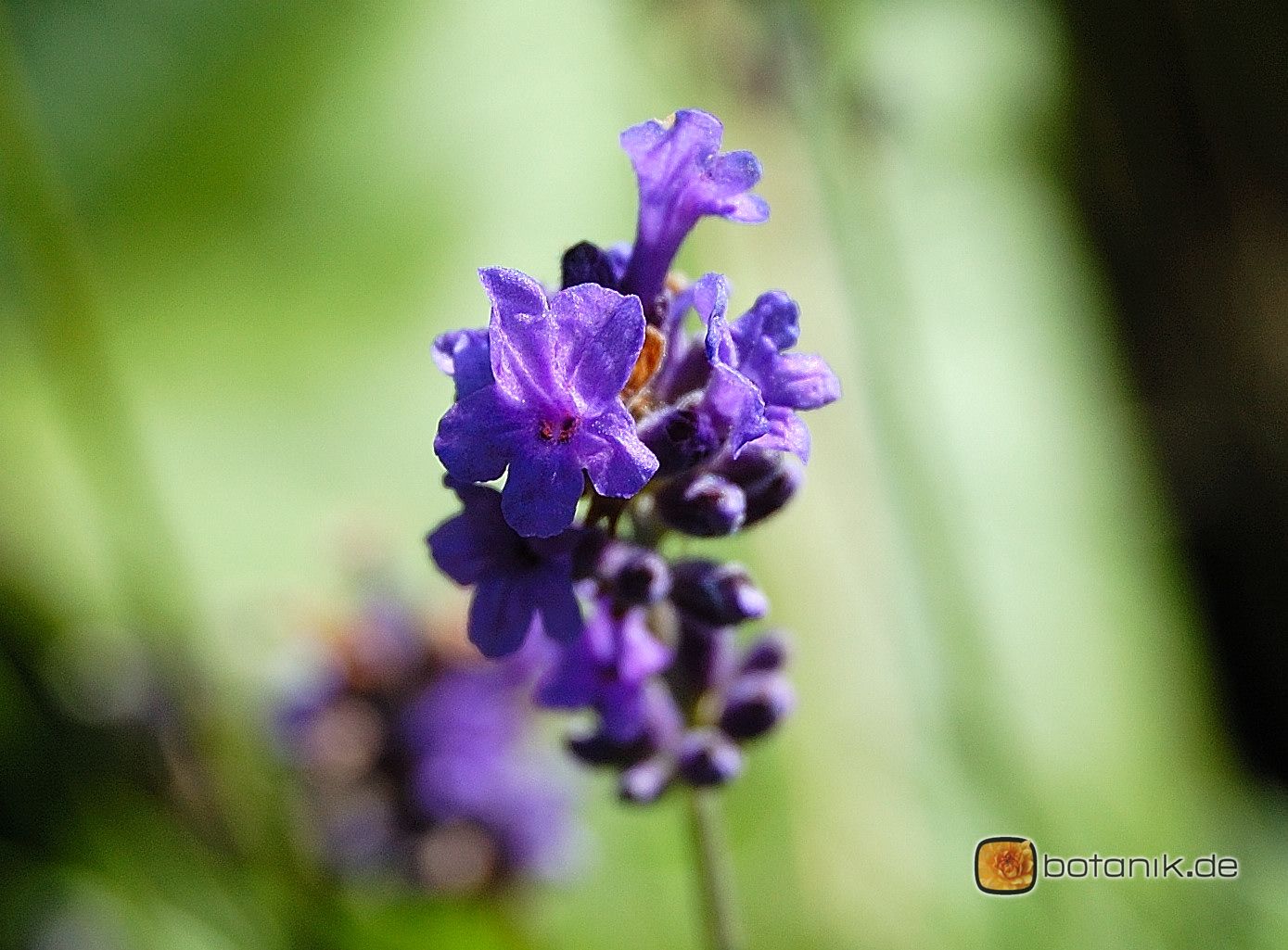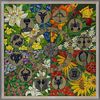Flower EncyclopediaENTER THE WORLD OF FLOWERS |
Other News
Lavandula
Category: Herbs and spices
10 Aug : 17:54
To view pictures click on them




 Lavender (Lavandula) is a genus of plants of the family lipped. The name most often used for species grown as herbs or for decoration. The most commonly used type of Lavandula angustifolia (former name L. oficinalis). Other frequently used for ornamental species are L. stoechas, L. dentata, L. multifida.
Lavender (Lavandula) is a genus of plants of the family lipped. The name most often used for species grown as herbs or for decoration. The most commonly used type of Lavandula angustifolia (former name L. oficinalis). Other frequently used for ornamental species are L. stoechas, L. dentata, L. multifida.The genus includes annuals, herbaceous plants, subshrubs and small hrasti.Lavandulata is evergreen leaves and change consistently. Flowers are small, located in the annular truss. Are colored in white, pale pink, violet or sinyo.Lavandulata is known as a flavoring plant since ancient times. It is widely used in folk medicine.
Widespread use and because it is now essential oil which is extracted from the colors (0,8-1,5%), which is widely used in perfumery, for flavoring soaps in the manufacture of paints and varnishes and others.
Lavender color means insecticide, especially against dreshniya moth in the civilized world and displace the use of naphthalene household.
Lavender honey is a valuable plant. Than 1 ha bees collect 10-18 kg of honey.
Lavender is also used as a condiment. Participate in the famous blend of herbs de Provence erb.
Lavender is applied and culture erosion and reduced soil and requirements to make it suitable for the cultivation of land which can not be kept basic Polish cultures.
Lavender comes from the Mediterranean. As a wild plant, it is found in southern France, littoral Alps, eastern Spain, Italy and North Africa.
With the development of the perfume industry the range of cultivation is extended to include the Balkan countries, the Black Sea Basin, USA, UK, Australia and others.
Top quality lavender oil is produced in France and Italy. The oil produced in Spain and Portugal have deteriorated flavor because it contains camphor.
Culture is introduced in Bulgaria in 1907 and began to be grown in experimental field at the Rose in Kazanlak. Until the late 80's this crop is grown mainly in the regions of Plovdiv, Stara Zagora, Pazardzhik and Blagoevgrad, and lately has been more prominently in the country. Than 1 year, 4.5 ha plantation produces 300-400 kg color, which is derived from 3.5 kg lavender oil. Bulgarian lavender oil is valued among the international family of pazar.Lavandulata lipped (Lamiaceae). In nature are found around 30 species of lavender.
The 1923 adopted a simplified classification of culture lavender, which it divides into 3 types:
* Normal, Fernleaf Lavender (Lavandula vera), which unites the species L. officinalis, L. angustifolia, L. vulgaris, L. vera;
Deciduous * lavender (Lavandula spica), which relate to the type L. latifolia;
* Hybrid lavender - between the two (L. hybrida), also known as type Lavandin.
Botanical Characteristics
* Root system released a strongly developed, the mass is located in the layer 0-40 cm, but skeletal and roots reach 4 m. This feature makes the plant suitable for strengthening against soil erosion.
* Over-ground part of the plant is tuff with a hemispherical shape and diameter of 60 cm for Fernleaf Lavender and up to 1 m in deciduous and hybrid. Branches are woody old and younger - grassy, chetirirabesti and covered with hairs.
o The leaves are linear or linear-lantsetni, sat down with envy tselokrayni periphery. They are located opposite and are covered with trihomi. Fernleaf Lavender leaves are sage green and broad are thoroughly covered with cloth and have a whitish color. Lavender has evergreen leaves and change consistently
o The flowers are small, bisexual, located in the annular truss class. Nevyanka is dvuustna funika - with two long parts of the upper lip and a 3 share of the lower beam. Colored in white, pale pink, violet or blue. There are 4 stamens. The colors of the hybrid lavender are large and sterile, which distinguishes it from hardwood.
o cluster of flowering stems are annual, long 20-40 cm (in broad lavender are longer and branched), and the number one plant up to 1000. Lavender has a broad-condensed clusters.
o ednosemenno fruit is dry, smooth and oval nut with a shiny black. There is no economic significance for the propagation of culture, since in such propagation is possible disintegration. Therefore, it is preferable vegetative propagation by cuttings.
Biological requirements
* As the light. Lavender is svetlolyubiva culture and does not tolerate shading. More intense solar radiation contributes to the accumulation of essential oil in more colors.
* As the heat. In the process of cultural evolution and selection is more adapted to harsh climatic conditions and adult plants withstand temperatures up to -30 ° C. Toleratnostta and to different thermal conditions makes it suitable for cultivation at an altitude of 0 to 1000 m.
* As moisture. Does not tolerate excessive moisture in the soil and high atmospheric humidity during flowering affects the quality of the oil.
* As soil. It grows best in poor, sandy soils and carbonate, but with annual fertilization with mineral fertilizers. Lavender is suitable for acidic soils and soils with high groundwater.
Lavender oil
* Lavender essential oil contains: linalilatsetat, Linalool, geraniol, borneol, tsineol, pinene, camphor, coumarin and dr.Nay linalilatsetatat is valuable, depending on growing conditions this ester ranges from 30 to 60%.
Top-quality French lavender oil is obtained from alpine lavender fields. Bulgarian lavender oil is characterized by durable fine flavor, though linalilatsetat content is low. Bulgarian lavender concrete not less quality of global models.
* Lavender oil has sulfur. Well preserved, it has a strong, intensely flavored, which slightly differs from the flavor of colors. Diluted with alcohol, it yields a fine aroma.
* Qualities Bulgarian lavender oil (to BDS):
o Appearance - lesnopodvizhna transparent liquid;
o Color - yellow;
o Odor - characteristic of the color of lavender;
o Water content - is not allowed;
o Specific gravity - 0,880-0,900
o refraction at 20 ° C - 1.46;
o Polarization at 100 millimeters pipe - -1 ° to -10 °;
o Acid number - at most 1.00;
o Linalilatsetat - at least 33%;
o Solubility in 70% alcohol - 1:10.
Lavender is svetlolyubiva, drought resistant and frost-resistant crop. It grows well on gravelly or sandy-clay-limestone soils. They must be well fortified and enriched with mineral fertilizers. The plant requires moderate moisture, since excessive moisture in the soil affects the quality of the oil.
Lavender comes from the Mediterranean. Loves open spaces and bright. To protect it from winter conditions place flowerpots in additional boxes. Boxes themselves are buried in the garden and covered with pine branches. It is possible the court to return indoors nemrazovito, dark and ventilated.
Propagation: Lavender can be propagated by seed and by vegetative means. In seed propagated greater likelihood to have lost the purity of the variety. Therefore, vegetative propagation is preferred - by rooted cuttings or by dividing the rhizome.
Category: Herbs and spices
Comments are turned off for this item0
| lavandula angustifolia dentata |
You must be logged in to make comments on this site - please log in, or if you are not registered click here to signup























































